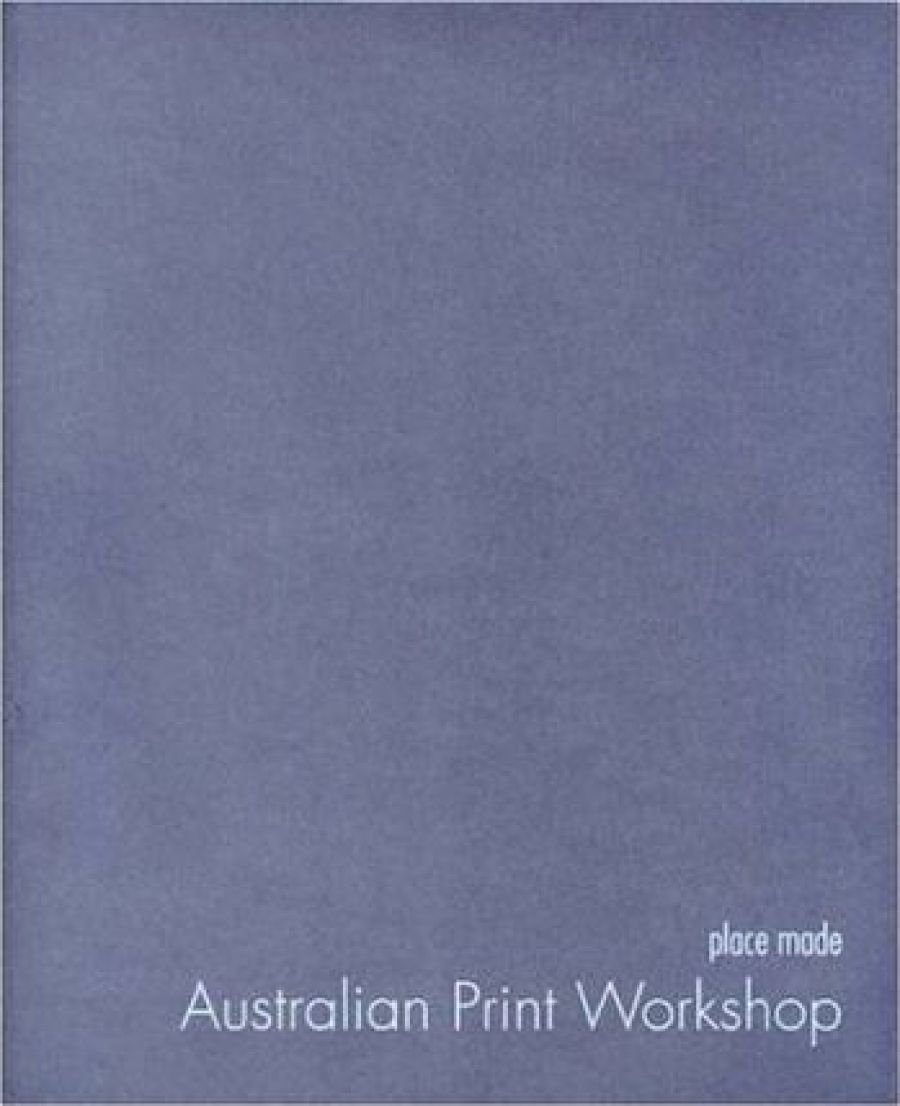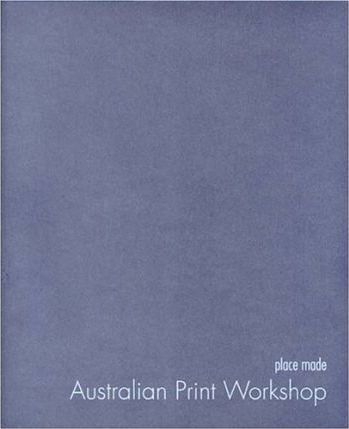
- Free Article: No
- Contents Category: Art
- Custom Article Title: Ink-stained Fingers
- Review Article: Yes
- Article Title: Ink-stained Fingers
- Online Only: No
- Custom Highlight Text:
In the long tradition of printmaking, print workshops have played a critical and often unacknowledged role in encouraging, supporting and teaching artists to become printmakers, providing facilities and technical expertise, and, above all, producing prints. It is well known that Picasso’s unconventional experimentation with print techniques was often directly inspired by his printers’ abilities, while the rise of interest in lithography in America in the mid-twentieth century was due to lithographic workshops established by printers such as Tatyana Grosman and June Wayne. Nevertheless, the printer’s part in the creation of a print is still often overlooked.
- Book 1 Title: Place Made
- Book 1 Subtitle: Australian Print Workshop
- Book 1 Biblio: National Gallery of Australia, $69pb, 200pp
- Book 1 Cover Small (400 x 600):

- Book 1 Cover (800 x 1200):

Having celebrated its twenty-first birthday two years ago, the APW is overdue for a survey of its achievements. The impetus for this publication, like so many art books today, was an exhibition, held at the National Gallery of Australia earlier this year (and now touring). The exhibition and publication mark the most recent and by far the largest of the various collaborative ventures undertaken by the two institutions. After long negotiations, the NGA – with the enviable assistance of the Gordon Darling Australasian Print Fund – has acquired one of the APW’s two archive sets of each print made at the Workshop. This second set is now stored in Canberra, with the 3500 prints comprehensively catalogued and photographed, and accessible via the Internet.
Compiled by Roger Butler, Curator of Australian Prints and Drawings at the NGA, and Anne Virgo, Director of the APW, Place Made comprises eleven essays written by a combination of curators, historians, APW staff and others. Butler opens the book with a discussion of the long and ongoing relationship between the APW and the NGA. A précis of the Workshop’s history is then followed by more focused discussion of projects such as outreach programmes and exhibitions, public commissions, publication of folios and Aboriginal printmaking (told from different viewpoints by a curator, a printmaker and a printer). Interspersed with the essays are short reminiscences by artists and printers (oddly, only the essay writers are listed as contributors on the imprint page), as well as numerous images of prints from the collection.
While much of this book is very informative, Place Made demonstrates the difficulties of multiple contributors (twenty-three in this case). Some facts and quotes are repeated, while other information is overlooked. For example, I learnt little beyond the most basic details about its founding. Surprisingly, given the number of voices, a feeling for the atmosphere and the many personalities – what John Wolseley describes as ‘the intense ecosystem’ – of the Workshop is elusive. The evocative anecdote or personal detail glowed brightly amid the facts. John Loane’s recollection of the Meat Market (‘adipocere’ was my word of the book), and Rick Amor’s one sentence about bygone Gertrude Street, were all too brief. For the same reason, I found the small documentary photographs disappointingly unclear on the unsized paper, which does some of the images no great service. Overall, the publication would have benefited from a tighter edit, and definitions of terminology (especially for artist, artist printmaker, artist printer, printer, master printer) would have helped readers outside the print community and have clarified inconsistent uses within the text.
Despite these concerns, Place Made is a commendable and attractive publication, beyond the unimposing cover. Each of the essays is self-contained, which makes for handy ‘dipping’, and some of the artists’ and printers’ snapshots are gems. The diversity of projects, the dedication of the staff and their enthusiasm for the print media are quite apparent and well worthy of celebration.


Comments powered by CComment